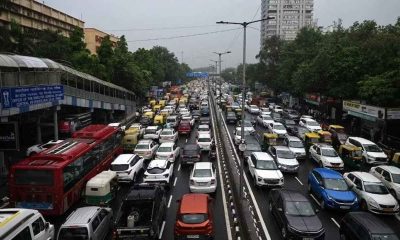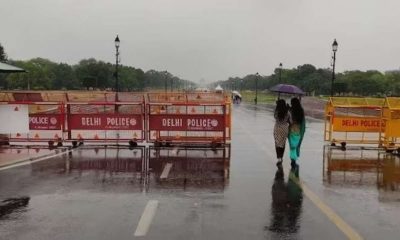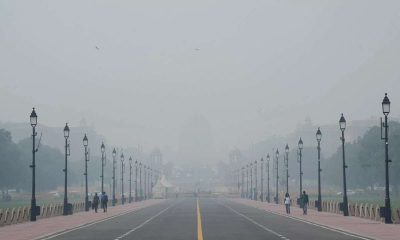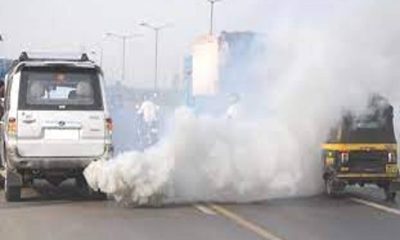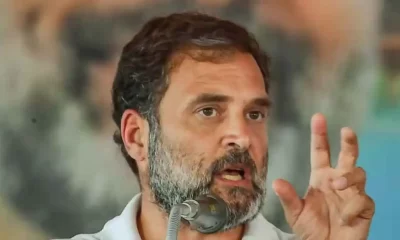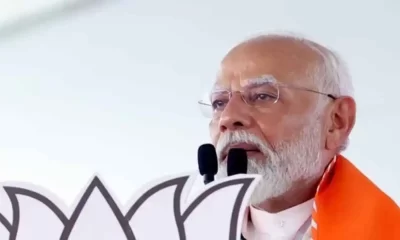Latest Science News
Odd-Even scheme had little impact on air pollution: study

~By Rayies Altaf
Air pollution is a serious problem in Delhi and vehicular traffic is generally thought to be the main culprit. But a new study done in the national capital has found that traffic density alone doesn’t have much impact on the amount or intensity of air pollution in the city. There are other environmental factors which play a vital role.
The study, conducted during implementation of traffic rationing policy – popularly known as `Odd-Even Scheme’ – implemented from January 1 to 15, 2016, found that there was hardly any impact on the characteristics and concentration of major air pollutants – particulate matter 2.5 (PM 2.5) and black carbon.
The average mass concentration of PM 2.5 and black carbon during the traffic rationing campaign was found to be much higher than expected. The concentration of PM 2.5 was higher than before the scheme was implemented. The average concentration of black carbon was found to be more than before the scheme came into effect as well as after the scheme ended. Both the cases show results, which are against the expectation of a decrease.
The PM 2.5 concentration was 163.51 microgram per cubic meter before, 186.98 microgram per cubic meter during and 197.45 microgram per cubic meter after the campaign. The concentration of BC was 14.01 microgram per cubic meter before, 19.87 microgram per cubic meter during and 17.79 microgram per cubic meter after the scheme ended. The unexpected results seem to be on account of lack of wind, low humidity and probable rise in the use of non-maintained vehicles during the campaign period.
“The daily variation in meteorological parameters makes it very difficult to delineate the effect of traffic density on PM concentration. Although there may be a reduction in the level of few pollutants, the decrease in the number of vehicles was not sufficient to make a visible change in PM characteristics over Delhi,” the study has concluded.
The positive impact was seen in terms of reduction in concentration of some harmful chemical elements like arsenic, copper, lead, phosphorus, magnesium, calcium, silica, sodium, chlorine, potassium, chromium and iron. These elements when inhaled for very long periods are known to cause many diseases in both humans and animals. Lead, for instance, is a known neurotoxin and is believed to cause adverse effects on pregnant women and children.
“An important aspect of the study is that it has highlighted the significance of surface winds in controlling air quality. The fact that winds do not blow much in Delhi means that we might need to rethink our urban construction planning. More extensive studies are needed in this direction to understand the dynamics and patterns of air pollution in local as well as broader context,” Prof AP Dimri, a member of the research team, explained while speaking to Indian Science Wire.
Delhi particularly suffers from high levels of particulate matter (especially PM 2.5) and black carbon. PM 2.5 refers to atmospheric particulate matter, which have a diameter of less than 2.5 micrometers – about 3% the diameter of a human hair. Such extremely small sized particulate matter tends to stay longer in the air than heavier particles, thereby increasing the chances of humans and animals inhaling them. The PM 2.5 directly enters living tissues through lungs, causing several respiratory and cardiovascular diseases. Black carbon is the sooty black material emitted from diesel engines of vehicles and holds a large portion of particulate matter in itself.
The research team included Vikas Goel, Sumit Kumar Mishra, Ajit Ahlawat, N. Vijayan and R.K. Kotnala, Chhemendra Sharma and S.R. Radhakrishnan (Environmental Sciences and Biomedical Metrology Division, National Physical Laboratory), besides Dr. Dimri, who is from School of Environmental Sciences at JNU. The study results have been published in journal Current Science. (India Science Wire)
India News
President Droupadi Murmu launches India’s first homegrown CAR T-cell therapy for cancer treatment
The gene-based therapy, which is developed by the IIT Bombay and Tata Memorial Centre, is being rolled out in India at about one-tenth of its price outside the country.
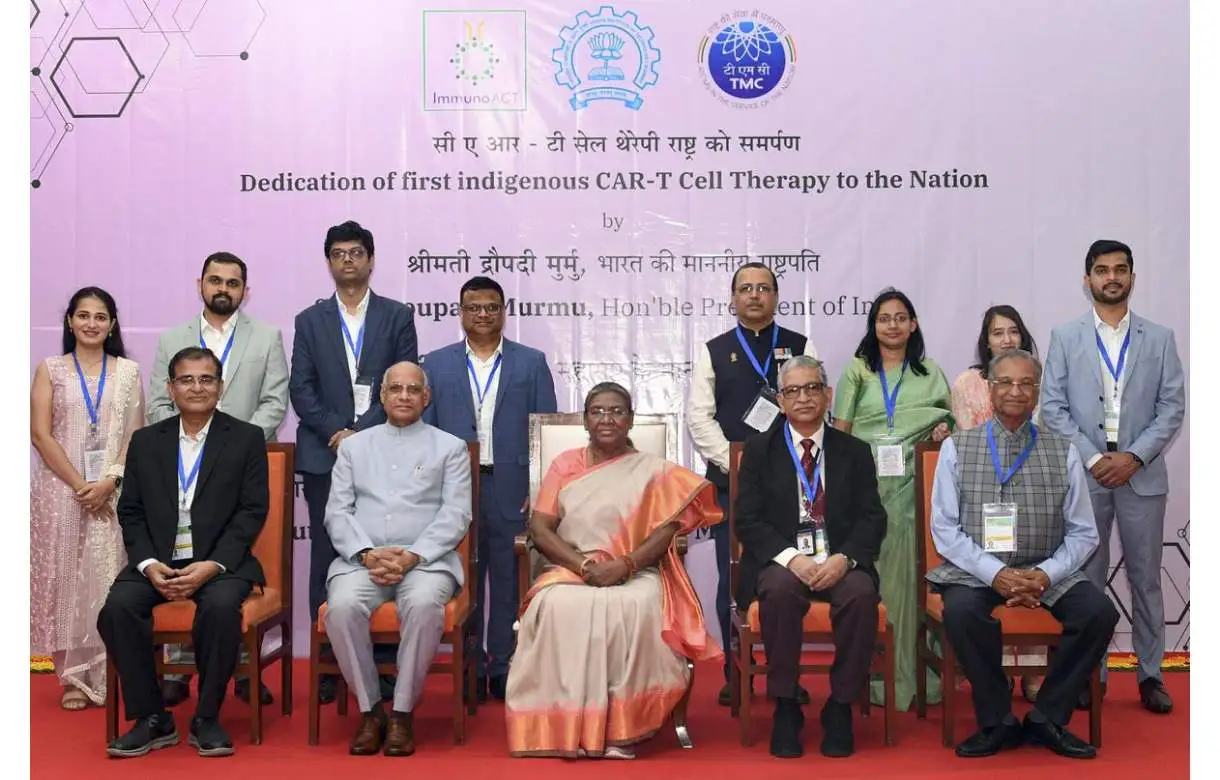
President Droupadi Murmu on Thursday launched India’s first indigenously-developed CAR T-cell therapy, a gene-based therapy, for cancer treatment, hailing it as a breakthrough that provides new hope for humankind in the battle against the diseases.
Speaking at the launch event at the Indian Institute of Technology (IIT) Bombay, Murmu said the indigenous development of the CAR T-cell therapy was an example of the Make in India initiative.
The gene-based therapy, which is developed by the IIT Bombay and Tata Memorial Centre, is being rolled out in India at about one-tenth of its price outside the country, as per the senior official.
In CAR T-cell therapy, a patient’s T-cells, which is a type of immune system cell or stem cell, are modified in the laboratory and inserted back into the patient to attack and destroy cancer cells after editing the stem cell.
The NexCAR19 CAR T-cell therapy, the country’s first Made in India CAR T-cell therapy, is expected to bring down the cost of treatment significantly.
During her speech, Murmu said that this therapy is considered a phenomenal advance in medical sciences. The development of this therapy is also an example of the Make in India initiative and speaks volumes about Indian scientists and physicians, she added.
The launch of India’s first gene therapy is a significant breakthrough in the battle against cancer. As this line of treatment, named CAR T-cell therapy, is accessible and affordable, it provides a new hope for the whole of humankind, President Murmu further added.
The Tata Memorial Centre director Sudeep Gupta said the CAR T-cell therapy was enormously expensive and out of the reach of an overwhelming majority of people.
Asserting that, he said NexCar19 needs to be custom manufactured for every patient under the most stringent conditions, but it has been rolled out at approximately one-tenth of the price at which it is available outside India.
The treatment costs approximately Rs 4 crore abroad against Rs 30 lakh in India, said IIT Bombay director Prof Subhasis Chaudhuri.
He further said that the low-cost CAR T-cell therapy was a huge achievement for the country and cancer patients, and places India firmly on the global map of cell and gene therapy.
Comparing the achievement of Chandrayaan-3 with CAR T-cell therapy, Chaudhuri asserted that CAR-T cell therapy heralds India’s entry into the cell and genetic engineering group.
The Tata Memorial Centre director Gupta said the treatment will help some 20,000 Indians every year, and its rollout is a milestone in the field of cancer care and genetic engineering.
He added the CAR T-cell was not only a scientific achievement of the highest order but also had immense practical application. NexCAR19 will save many, many lives and wipe many, many tears, he emphasised.
India News
ISRO launches weather satellite INSAT-3DS to monitor Earth’s surface, oceans
The Naughty Boy has now become a mature, obedient and disciplined boy like PSLV, and GSLV as they have become a very robust vehicle for ISRO, said Tomy Joseph.
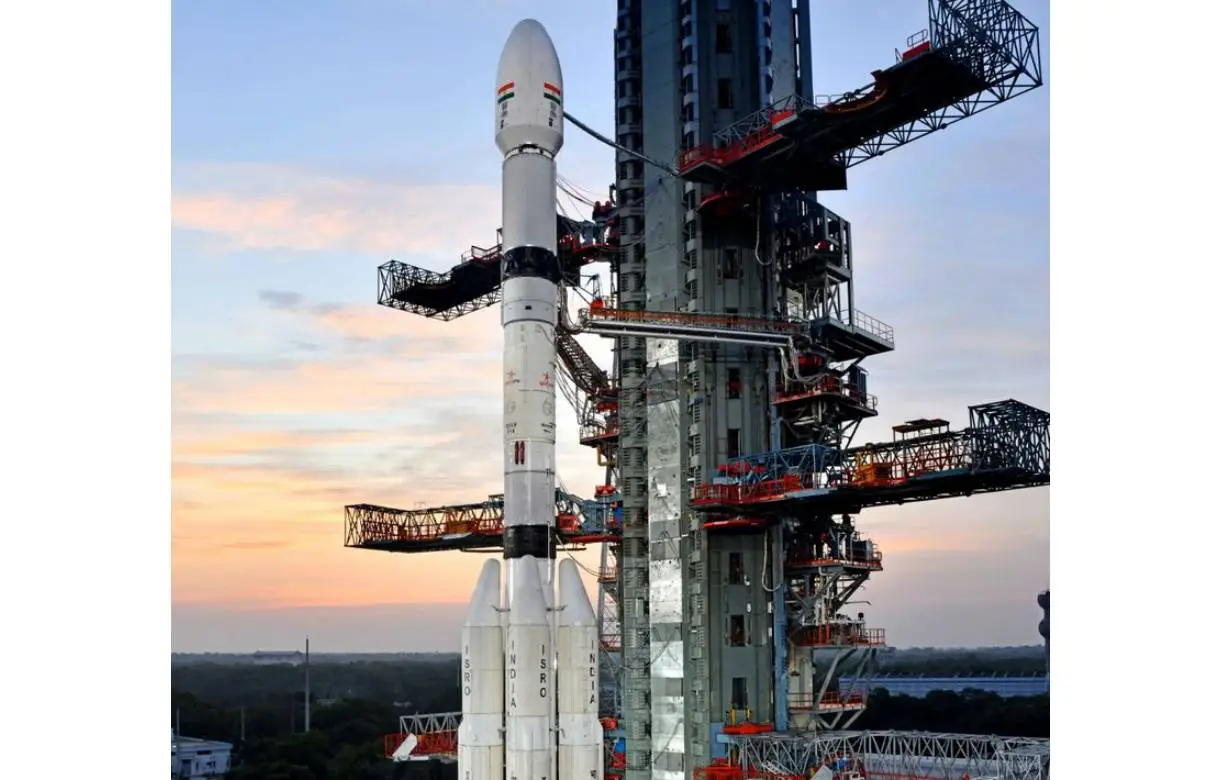
The Indian Space Research Organisation (ISRO) on Saturday launched the INSAT-3DS mission from Satish Dhawan Space Centre in Sriharikota at 5:35 pm to monitor the Earth’s surface, observe the ocean and analyse the environment through various essential meteorological perspectives.
In its mission, the Geosynchronous Satellite Launch Vehicle (GSLV) aimed to deploy the INSAT-3DS meteorological satellite into the Geosynchronous Transfer Orbit (GTO). Subsequent orbit-raising maneuvers will ensure that the satellite is positioned in a Geo-stationary Orbit.
After being positioned in GSO, it will provide information on diverse atmospheric conditions via vertical profiles. INSAT-3DS will manage data collection and dissemination from Data Collection Platforms (DCPs). The satellite will help in search and rescue services.
Congratulating the team, ISRO Chairman S Somanath expressed his happiness over the successful accomplishment of the mission GSLV-F14 INSAT-3DS. He further said that the spacecraft has been injected into a very good orbit. The space agency has also noted that the vehicle has performed very well.
The INSAT-3DS Mission Director, Tomy Joseph sarcastically remarked, saying the Naughty Boy has now become a mature, obedient and disciplined boy like PSLV, and GSLV as they have become a very robust vehicle for ISRO.
The Geosynchronous Satellite Launch Vehicle (GSLV) is a launch vehicle with a length of 51.7 meters and a liftoff mass of 420 tonnes. It consists of three stages, the first stage (GS1) is made up of a solid propellant motor with 139-ton propellant and four earth-storable propellant stages (L40) strapons. Each strapon carries 40 tons of liquid propellant.
The second stage (GS2) is also an earth-storable propellant stage that carries 40-ton propellant, and the third stage (GS3) is a cryogenic stage with a 15-ton propellant loading of liquid oxygen (LOX) and liquid hydrogen (LH2).
To protect the satellite during the atmospheric regime, it is covered by an Ogive payload fairing. The GSLV is versatile and can be used to launch various spacecraft capable of performing communications, navigation, earth resource surveys, and other proprietary missions.
The launch of INSAT-3DS was a follow-on mission of Third Generation Meteorological Satellite from Geostationary Orbit. According to ISRO, the GSLV-F14/INSAT-3DS mission has been fully funded by the Ministry of Earth Sciences (MoES) and designed for enhanced meteorological observations and monitoring of land and ocean surfaces for weather forecasting and disaster warning.
The satellite will augment the Meteorological services along with the presently operational INSAT-3D and INSAT-3DR satellites.
Notably, the services will be used by various departments of the MoES such as the India Meteorology Department (IMD), National Centre for Medium-Range Weather Forecasting (NCMRWF), Indian Institute of Tropical Meteorology (IITM), National Institute of Ocean Technology (NIOT), Indian National Center for Ocean Information Services (INCOIS) and various other agencies.
India News
PM Modi says day not far when an Indian will land on moon in indigenously built spacecraft
PM Modi said a strong roadmap has been drawn till 2040 for the space sector. He made the announcement after flagging off the first Namo Bharat train on the 17 km stretch of the Delhi-Meerut Regional Rapid Transit system.

Prime minister Narendra Modi on Friday said the government has drawn up a roadmap for the development of space sector and the day is not far when an Indian will travel to the moon in an indigenously built spacecraft. PM Modi said India’s Gaganyaan will soon take Indian astronauts to space and the India wants to establish its own space station.
PM Modi said a strong roadmap has been drawn till 2040 for the space sector. He made the announcement after flagging off the first Namo Bharat train on the 17 km stretch of the Delhi-Meerut Regional Rapid Transit system.
PM Modi recalled the success of India’s moon mission Chandrayaan3 which had recently placed the country’s tricolour on the lunar surface. He said India of the 21st century is writing new chapters of progress and development for the landing on the moon has left the world awestruck.
PM Modi added with impeccable hosting of the G20 summit, today’s India has become the centre of attraction and curiosity for the world. He said today’s India wins more than 100 medals in the Asian Games.
PM Modi added today’s India launches 5G on its own strength and takes it to all corners of India. He further added todays India does the highest number of digital transactions. He said the Namo trains that were flagged off today were all made in India.
PM Modi set goals for the Indian Space Research Organisation (ISRO) by asking engineers and scientists to work towards setting up an Indian space staion by 2035 and sending an Indian astronaut to the lunar surface by 2040. PM Modi also asked the scientists to undertake interplanetary missions like the Venus orbiter and also attempt a landing on Mars. PM Modi further added the government has handed over festival gifts by reducing the gas cylinder price by Rs 500 for Ujjwala Yojana beneficiaries.
-

 2024 Lok Sabha Elections22 hours ago
2024 Lok Sabha Elections22 hours agoDeserted by key supporters, the Kamal Nath story looks set to wind to an end in Chhindwara
-

 Entertainment23 hours ago
Entertainment23 hours agoAditya Roy Kapur, Sara Ali Khan’s Metro In Dino to release this November
-

 2024 Lok Sabha Elections24 hours ago
2024 Lok Sabha Elections24 hours agoLok Sabha Elections 2024: Nearly 40% voter turnout till 1pm
-
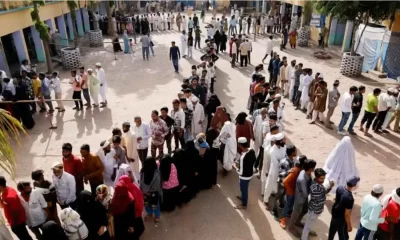
 2024 Lok Sabha Elections20 hours ago
2024 Lok Sabha Elections20 hours agoLok Sabha Elections: Voter turnout 62.02% in Tamil Nadu till 5pm
-

 Featured22 hours ago
Featured22 hours agoNima Sulaiman joins HiLITE Group Board, her father gifts her a Porsche
-
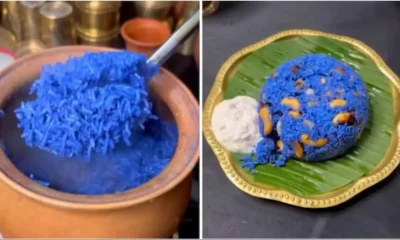
 Food22 hours ago
Food22 hours agoSocial media users stumped after food vlogger makes blue-coloured ghee rice, video viral
-

 Cricket news4 hours ago
Cricket news4 hours agoIPL 2024: Lucknow Super Giants beat Chennai Super Kings by 8 wickets
-

 Trending21 hours ago
Trending21 hours agoRanveer Singh reacts to his viral deepfake video promoting political party



